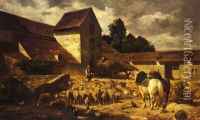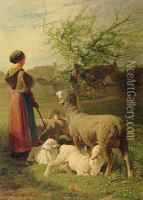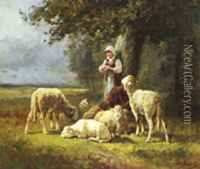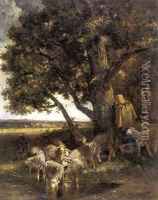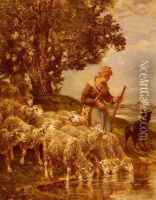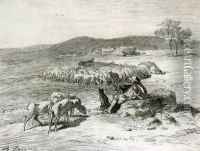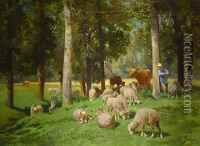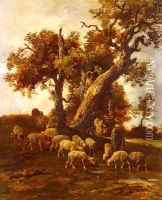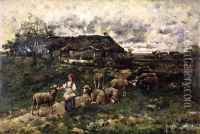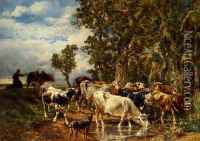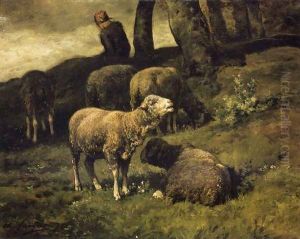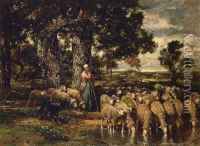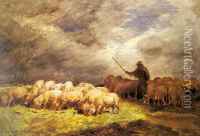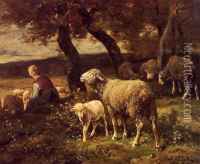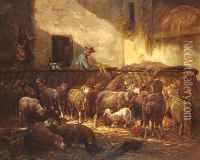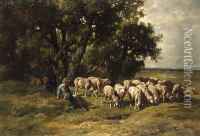Charles Emile Jacque Paintings
Charles Emile Jacque was a prominent French painter and engraver, born on May 23, 1813, in Paris, France. His career spanned much of the 19th century, during which he became well-known for his contributions to the Barbizon school, a movement that emphasized natural landscapes and directly influenced the Impressionist movement. Jacque's work primarily focused on rural scenes, animals, particularly sheep, and pastoral landscapes, capturing the serene beauty of the French countryside with a remarkable sense of realism and detail. Before establishing himself as a painter, Jacque began his career as an engraver and lithographer, skills that would later contribute to his nuanced handling of light and shadow in his paintings. He served in the French army, which provided him experiences that influenced his early works. After his military service, he returned to Paris and immersed himself in the artistic community, eventually moving to Barbizon, a village that became synonymous with the art movement bearing its name. Jacque's engagement with the Barbizon school allowed him to develop a more naturalistic approach to landscape painting, diverging from the more formal traditions of the French Academy. Jacque's contributions to art were not limited to his paintings; he was also a skilled etcher, producing over 600 plates during his lifetime. His technical mastery in etching brought him considerable recognition and helped to revive interest in this art form during the 19th century. Jacque's work received international acclaim, and he was awarded several medals at the Paris Salon, the premier art exhibition in France. His influence extended beyond his lifetime, as his detailed studies of nature and rural life continued to inspire future generations of artists. Charles Emile Jacque passed away on May 7, 1894, in Paris. Today, his works are held in high regard and can be found in major museums around the world, including the Louvre in Paris and the Metropolitan Museum of Art in New York. His legacy as a key figure in the Barbizon school and as a precursor to Impressionism remains significant in the history of art.
